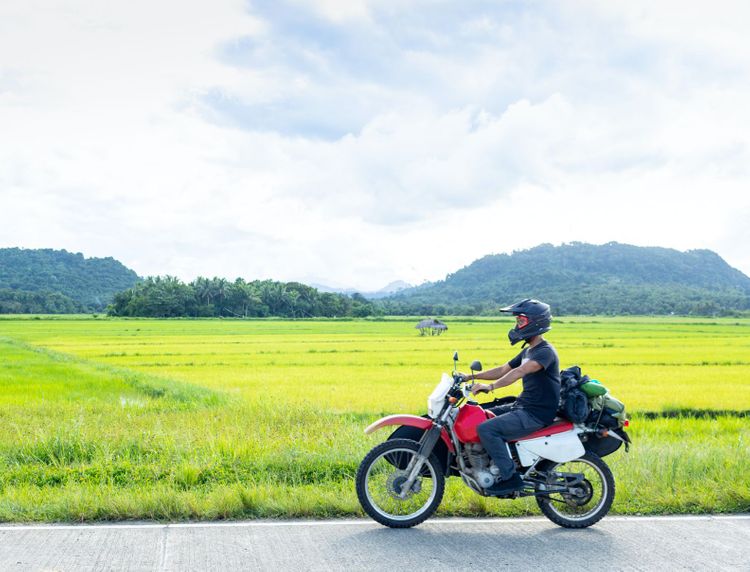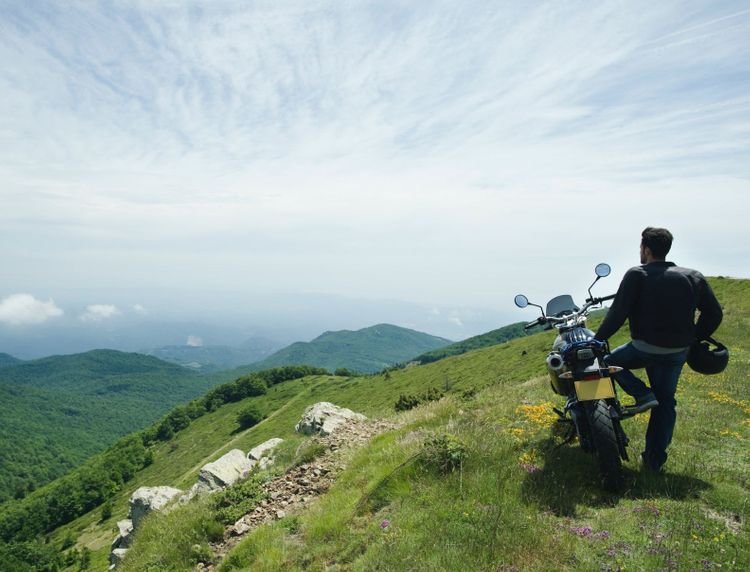Essential & Advanced Bike Riding Skills
You can only truly master advanced motorcycle riding techniques with practice. And to help you out with that, this article enlists some motorcycle handling skills that will have you transformed into a pro in no time. However, before we venture into the advanced skills for riding your motorcycle with suave and confidence, it is important first to acquaint oneself with the basic riding skills. This is because without strengthening the foundation, one cannot hope to master or even start to learn advanced skills.
A word of caution, whether you are learning the basics or the advanced techniques, it is essential to protect yourself with a full-face cover helmet, appropriate safety gear, and a two-wheeler insurance policy. While only third-party insurance is a legal mandate, we strongly recommend getting comprehensive two-wheeler insurance because you are a newbie rider and are always at the risk of hurting yourself.
Share this article
List of Content
- Basic Riding Skills Bike Riders Must Master
- Advanced Motorcycle Riding Techniques
- In Conclusion
Basic Riding Skills Bike Riders Must Master
Every rider can improve motorcycle riding skills by mastering some basic techniques. These techniques are not meant only for new riders but also for experienced ones who can use these motorcycle skills to practice:
Improving Clutch Control: The rudimentary aspect of every clutch skill is understanding the friction zone wherein the clutch switches from an engaged to a disengaged state.
Appropriate Braking: Most accidents occur owing to the poor braking skills of the rider. And so, in addition to investing in comprehensive insurance for two-wheeler riders must learn how to brake in controlled environments. Despite the in-built ABS in the newer motorcycles, riders need to appropriately acquaint themselves with the braking mechanism.
Polishing Downshifting: Amongst other motorcycle riding skills downshifting is probably the most neglected and yet one of the most important riding skills. Fortunately, it is also amongst the simplest motorcycle handling skills to master. To smoothen downshifting, the rider only has to correspond the speed of the engine to the relevant lower gear.
Being Alert: It is essential to be aware of your surroundings at all times and protect yourself with the right headgear, safety gear, and comprehensive two-wheeler insurance to take care of contingency situations.
Now that we know about the basic motorcycle skills to practice, we can go on to learn about advanced motorcycle riding techniques.
Advanced Motorcycle Riding Techniques
To improve motorcycle skills every rider must know that they will have to continue to practise it until they get a hang of what the technique involves. Before learning advanced motorcycle riding skills, every rider has to have their safety gear and insurance for two-wheeler handy. Considering this, here is a list of some advanced motorcycle riding techniques:
- Riding at a Slow Speed
You are more likely to ride at slow speeds than at high speeds, particularly on city roads that are congested with traffic. Whether it is riding in traffic, gaining motion after a stop, or turning and changing directions, every rider must master slow-speed riding. Here’s how riders can improve motorcycle skills when it comes to slow riding:
Learn to effectively master the clutch. When you slowly release the clutch, it starts to engage the power to the rear wheel. Ensure you only make slight power adjustments.
Drag the rear brake to increase the stability of the motorcycle
When your speed is slow, avoid the use of front brakes
Throttle at a sustained level by creating available power
Relax your upper body and don’t fight the handlebars
Turning Sharp Right from a Stop
This can be a challenging manoeuvre because the rider is expected to turn a sharp right in a constrained space by preventing the power of the motorcycle from pushing them out. Here’s how to master sharp rights:
Engage rightly with the clutch to get back into motion after a stop. To improve your motorcycle cornering confidence, aim for a 90-degree angle at a narrow turn.
Increase the space between your upper body and your right elbow
Use a small push steering applied on the right bar
Once you complete the turn, completely release the throttle and return your fingers to fully grip the handlebars. Move your feet back from the levers to the pegs.
With continued practice, you can improve motorcycle cornering confidence
High-Speed Braking
High-speed braking is an essential skill to avoid a collision and it has a lot to do with being active and alert. Here is how you brake at high speed in a controlled environment:
Pick a predetermined stopping point. Accelerate in a straight line to at least mid-to-high second gear and simultaneously apply both brakes along with the clutch lever. Ensure that you stop safely and quickly without skidding or locking the rear wheel.
The braking controls shouldn’t be grabbed but squeezed by pulling them towards you when you wish to stop
While in motion, tap on the gear shifter to be in the first gear when you stop
To maximise the tyre grip, ensure your bike is straight and upright
The motion will force your body to fall forward and so grip the tank with your knees and keep your chin up and arms strong to keep from falling forward
Once your bike is motionless, rest your left foot on the ground and do a traffic check over your left and right shoulder to ensure your safety
Counter Steering
Counter steering is the forward pressure applied to your handlebars while riding at speed. Improper push steering is another of the leading causes of accidents. As you will be expected to use the manoeuvre frequently, it is essential to be proficient in it. Empty parking lots are amongst the safest places to practice push steering.
Counter steering is quite an advanced skill. Here you have to push the handlebar against the direction. If you want to move to the right, push the right side of the handlebar as if you are trying to turn left. But the bike will lean to the right. It may seem very confusing for new riders, but when you understand that the bike works on the fundamentals of gyroscope, you shall get the idea.
Here’s how to master this skill:
In a straight line, accelerate until you reach at least mid-to-high second gear. Pick a spot that is ahead of you and as you approach it, try to swerve around it.
Don’t pull while doing this. It is a forward push like the one that is applied to a door.
Road Relaxation Technique
Fear is possibly the biggest hurdle against improving motorcycle riding skills. Riders must find the balance between overreacting and underreacting to avoid mishaps on the road. Here is how you can prevent contingency situations while riding:
- Scan the road from the front, sides, and rear to continually be aware of the traffic, turns, lanes, and junctions around you
- Be attentive to the road signs and hazards such as construction zones, vehicles ahead of your turning left, etc.
- If you are attentive on the road and the car in front of you pulls, you can take the necessary action without having to undergo a panic response
- Don’t be conflicted on the road, as this can confuse other riders. For example, if a car in front of you stops, decide beforehand whether you will stop or turn around it.
- Analyse your skills and then choose the curse of action. Don’t do things that you are not sure of while on the road.
In Conclusion
Mastering motorcycle riding skills is a continuous process. However, while doing so it is crucial to not neglect your safety by investing in comprehensive two-wheeler insurance. The insurance for two-wheelers by Tata AIG is designed to take care of a host of emergencies on the road. It comes with a choice of eight add-ons to amplify protection for riders. To find suitable and affordable coverage, you can use the free bike insurance calculator that assists in making an informed insurance purchase.
Share this article
Latest from our blogs

What Does It Take to Be a Good Biker?
You must have wondered what it takes to become a better ride...
Read More
5 Things You Did Not Know About Two Wheeler Insurance
In a time of heavy traffic and accidents, two wheeler insura...
Read More
5 Tips To Keep Your Two Wheeler Looking New
Make sure to wash it often. This keeps dirt and other unwant...
Read More